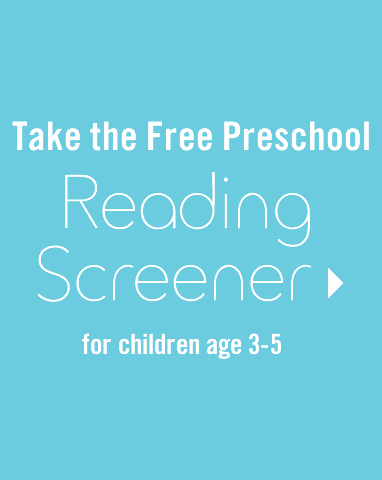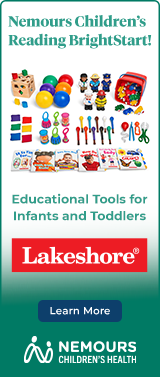Every child is unique, with his or her own personality, interests and developmental timetable. Not all babies speak, crawl or walk at the same time. Think of all the hours your child spends learning to roll over, sit up, crawl, cruise furniture and walk holding your hand before letting go to take the first big steps alone.
Similarly, parents eagerly await the day their child speaks those exciting first words. Some children talk early, others a little later. Some children prefer to watch and listen to everyone else, not saying a word at first. Then all of a sudden he is talking nonstop, catching you by surprise. The same is true for all childhood milestones. Some skills may suddenly appear “out of the blue,” while other skills may need much more exposure and practice before your child shows she can do it. For language and pre-reading development, it’s very similar.
- Babies learn first to pay attention to voices, words, songs and books. They respond by smiling, cooing, pointing to pictures and making sounds that eventually become words.
- Toddlers pay attention longer and begin to show an interest in reading by turning pages, pointing to and naming pictures, and finishing sentences.
- By age 3, little ones understand more about story plots, characters’ problems and feelings and simple connections with their own lives. They also learn about letters, start to recognize their own names in print and show pleasure with stories and songs that rhyme, repeat phrases or use words that start with the same sound. Drawing, pretending to write and “reading” to their toys may become favorite activities.
- By ages 4 and 5, children start to show an awareness of the reading readiness skills they have been exposed to, such as knowing most letter names and letter sounds, understanding more about word parts, or maybe even reading and trying to spell some words. A lot of work, disguised as play, by you and your child will make these reading development breakthroughs possible.
There are four sets of skills that emerge between birth and age 5 that are essential for solid reading readiness. These skills include:
![]()
As much as these skills individually are important, they also overlap and go hand-in-hand. For example:
- The larger a child’s vocabulary, the more likely she is to recognize words that rhyme in stories and songs or to name words that start with the same sound.
- The more letter names and letter sounds a child knows, the more beginning writing skills he is likely to use.
Choose activities frequently from each of these skill sets. But don’t forget that reading a book for pure enjoyment is really important too! Most of us remember some favorite books from our own childhood that evoke happy feelings. We may remember listening to stories read to us with someone special, choosing a book from the book fair at our elementary school or receiving a book as gift from our parents or grandparents. Reading books with your young child will build a strong emotional bond that will serve your child for a lifetime and leave you with lifelong memories too.
Our goal is to help you feel confident in understanding your child’s development toward reading readiness and knowing what skills to look for over time. Hopefully it will help alleviate your worries by sharing typical development and things you can do each day to encourage growth. If you have concerns about your child’s reading development, talk with your doctor and check on local resources that can offer assistance.
We know a lot about what it takes to develop successful readers. By doing the activities on this website often (daily if possible), over time your child will build a strong reading readiness foundation. For children with extra learning challenges, these activities will still move them forward, and you will be able to find help sooner by knowing where your child stands.









